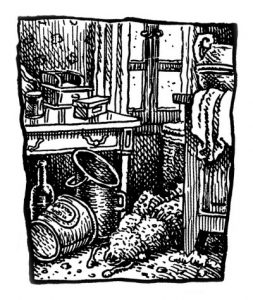- Never Ending Tour, 2006, Part 1, Enter The Organ Grinder
- Never Ending Tour, 2006, Part 2, Enter Modern Times
- Never Ending Tour, 2006, Part 3. Walking through the Cities of the plague
- Never Ending Tour 2006, Part 4. Strange Brews
- A list of the previous 86 episodes is here.
By Mike Johnson
Odd, inflexible staccato rhythms, broken phrasing, tired dumpty-dum tempos, a broken circus barker voice, a curious rinky-dink organ…this is what I thought I had to look forward to in 2007, given the hole the NET appeared to have fallen into, at least among the commentators I read.
Imagine my surprise, therefore, as I was sorting my files, to find ‘Till I Fell in Love With You’ from the Birmingham concert (17th April). It was playing in the background, when I realized I had found something special. It’s a standard blues complaint, but it was swinging, as the 1940s big bands swung, and when Dylan started on the harp, I suddenly had a ‘best ever’ performance on my hands. The band was on fire. Dylan was blasting away like Paul Butterfield in the 1960s. I kept thinking I was hearing saxophones and trumpets but of course it is all guitars, guitars that sound like a big band. And Dylan’s full-throated harp.
I should have learned by this stage not to trust the critics, but insteda to trust my own ear. Fair to say that Dylan had been working on that song since 1997 (Time Out Of Mind), honing it, bringing forward its menacing beat, swinging it, slowly turning it into a solid performance like this. The success of this performance is a testament to the power of blues, however ‘generic’ it might sound to some. The theme of the song, that falling in love can be a total, life-wrecking disaster, has its underlying humour.
Junk is piling up, taking up space My eyes feel like they’re falling off my face Sweat falling down, I’m staring at the floor I’m thinking about that girl who won’t be back no more I don’t know what I’m gonna do I was all right ’til I fell in love with you
(Note, these Birmingham recordings are the work of bootlegger Crystal Cat who we encountered back in 2005, famous for the sharpness and clarity of their recordings. See 2005, Part 1.)
Till I Fell in love with you
That was not the only pleasant surprise. I’d pretty much given up on expecting anything new and exciting from ‘It’s Alright Ma,’ as it had been stuck in a lumbering Sonny Boy Williamson riff for some years. Listening to this one, from Orillia (7th July), I was swept along by a new, hard rocking arrangement. The song hadn’t sounded so powerful in years. The sweeping attack on all things false and phoney was once more full of vitality, a compelling experience.
It’s Alright Ma (A)
Just four months earlier, at Stockholm, the song had still been in the Sonny Boy Williamson mode. It was swinging, but leaning towards the dumpty-dum. It was emerging into the version we’d hear at Orillia, but hadn’t quite got there yet.
It’s Alright Ma (B)
While that had a driving rock force carrying it along, this version of ‘It’s a Hard Rain Gonna Fall’ goes in the other direction, towards a lilting gentleness in counterpoint to the horrors being described. The performance seems to tiptoe around its subject matter as if these visions were too terrible to be described much above a whisper.
Hard Rain
These were not the only pleasant surprises in store for me as I worked through the material. Many of these songs sounded fresh and reinvigorated rather than old and stale. Take this ‘She Belongs to Me,’ from 14th April (Sheffield). Abandoning the slow, dirge-like tempo of previous years, and to which he will later return, Dylan belts this one out as a mid-tempo rock song. It has a catchy beat and a bit of swing to it. This is a bit of alright, I thought.
She belongs to me
I was also pleasantly taken with this thoughtful version of ‘Shelter from the Storm.’ Dylan abandons the upbeat tempo that made for such a great performance in 2005 (See NET, 2005, part 1) for a performance slower and more contemplative. This goes to show how different performances of the same song suit different moods. This one is gentle and contemplative. Incidentally, I notice that there are times, such as here, where Dylan can really sing and hit the high notes. It seems the circus barker appears when Dylan wants him to.
Shelter from the Storm
And sometimes that rinky-dink organ sound really works. When writing about this performance of ‘Simple Twist of Fate’ in my Master Harpist series (See Master Harpist, part 3), I commented on how Dylan’s circus-like organ added pathos to the scenes we are presented within the song, while the harp helped keep us at a whimsical distance from those scenes. I’d like to take that a step further. Dylan’s curious organ riffs put me in mind of an amusement park or fairground, and I see the two protagonists of the story with this in the background, maybe a Ferris wheel turning, gaudy lights flashing, tawdry music playing. The experience related may have happened many years before, and we are seeing it through the hurdy-gurdy of memory.
Suddenly this old masterpiece glitters with a new strength.
Simple twist of fate
On a lighter note, I was happy to find this performance of ‘Country Pie,’ a rarity for the NET and the last known performance of the song. It’s a delightful bit of fun and nonsense from Nashville Skyline. This one, from Stockholm, barely three minutes, is a cheeky little interlude. No matter how light-hearted and frothy Dylan can be in such rare moments, those innocents who assume he’s talking about a baked pie from the oven might look again:
Saddle me up my big white goose Tie me on ’er and turn her loose Oh me, oh my Love that country pie
Country Pie
In the last post for 2006 (Part 4), I introduced the song ‘Ain’t Talking’ and said that the song came into its own in 2007. This is one of Dylan’s journeying songs, taking us on a wild trip through landscapes and emotional postures. The journey, I suggested, parallels and echoes the Roman poet Ovid’s journey into exile.
It is dark, violent and conveys a vision of an earth of endless suffering.
The sufferin' is unending Every nook and cranny has its tears I'm not playing, I'm not pretending I'm not nursin' any superfluous fears
The mystic garden of paradise, with its ‘wounded flowers’ has been deserted. The spiritual guardian of the garden has departed.
Excuse me, ma'am, I beg your pardon There's no one here, the gardener is gone
I’d like to begin with the St Louis performance (22nd Oct). It’s a beautifully clear recording with Dylan singing softly, with an almost ghost voice, emphasising the spookiness of the song.
Ain’t Talkin (A)
That was my favourite performance until I heard this next one (date unknown). Here the softness and spookiness of the song develop a hard edge. The vocal is a little more forceful.
Ain’t Talkin (B)
That was my favourite until I heard this one, from Birmingham. It may be that forward, Crystal Cat recording that does it, but the vocal is very strong. The spookiness of the song is still there, but that hard edge is now clearly despair and anger. A remarkable performance.
Ain’t Talkin (C)
I have to reiterate here that I think ‘Ain’t Talkin’ is one of Dylan’s best songs. The imagery is wide-ranging, but there is a focus and emotional coherence which lifts it into greatness. Interestingly, while Dylan is happy to drop verses out of his old, 1960’s classics like ‘Desolation Row’ and ‘Mr Tambourine Man’, all nineteen verses of ‘Ain’t Talkin’ are intact in these performances.
Staying with Modern Times, we come across the first performances of ‘Beyond the Horizon,’ which Dylan did not perform in 2006. This song is one of several (‘Bye and Bye’,’Moonlight’,’Spirit on the Water’…) which use happy, schmaltzy melodies from the era between the two world wars as a vehicle for lyrics of power, of subtlety, lyrics that are deceptively simple. The song appears to offer the comforts of banality, but there are deep currents beneath.
For ‘Beyond the Horizon’ Dylan uses that vacuous old song ‘Red Sails in the Sunset,’ written by Jimmy Kennedy and Hugh Williams in 1935, to create a song that evokes our most dear hopes that love will survive after death.
Beyond the horizon, in the springtime or fall Love waits forever for one and for all Beyond the horizon across the divide 'Round about midnight, we'll be on the same side Down in the valley the water runs cold Beyond the horizon someone prayed for your soul
However, the phrase ‘beyond the horizon’ does not simplistically stand for death. The ‘horizon’ might stand for any great divide in our lives, the point beyond which we cannot know.
Beyond the horizon the night winds blow The theme of a melody from many moons ago The bells of St. Mary, how sweetly they chime Beyond the horizon I found you just in time It's dark and it's dreary I been pleading in vain I'm old and I'm weary My repentance is plain
Part of Dylan’s genius as a lyricist is his ability to use ordinary phrases, common sayings and cliches and bind them into something extraordinary. That is what he does here. The song has this breezy surface, as if it is just one of those mushy old love songs, while it actually explores some of our deepest feelings around love and death.
Beyond the horizon, 'neath crimson skies In the soft light of morning I'll follow you with my eyes Through countries and kingdoms and temples of stone Beyond the horizon right down to the bone
I don’t know the date of this one, but I’m guessing that it’s from Manchester (5th Oct). The song was only performed fifty-eight times between 2007 and 2009, and this live recording is as good as it gets.
Beyond the Horizon
The best song to follow that is another from the same bag, ‘Moonlight’ from Love and Theft (22nd June, Atlantic City). Except for the refrain, which recalls the Carter Family’s 1928 recording of Joseph Wade’s song ‘Meet Me by the Moonlight’, the melody is Dylan’s own. Interestingly, it sounds as if it were borrowed. Wikipedia gives our editor a mention on this one: ‘According to Dylan scholar Tony Attwood, the song sees Dylan “playing with chords that he rarely if ever used before – chords of the type we might well find in the American popular songs of the 1920s and 1930s”’. We could say the same about ‘Po Boy.’
Moonlight
Ritual dictates that I finish this post with ‘All Along the Watchtower,’ still Dylan’s preferred final song.
A goose-stepping ‘All Along the Watchtower’? Well, it’s always had the drums of war thrumming along in the background, but here the song has turned into a frenetic march, goose-stepping for Armageddon. The vocal lines get chopped up by this relentless march. Even the softer parts sound weird with that menacing little organ. This one’s from St Louis.
Watchtower
That’s it for us this time around. Join me next time for more Dylan sounds from 2007.
Until then,
Kia Ora




